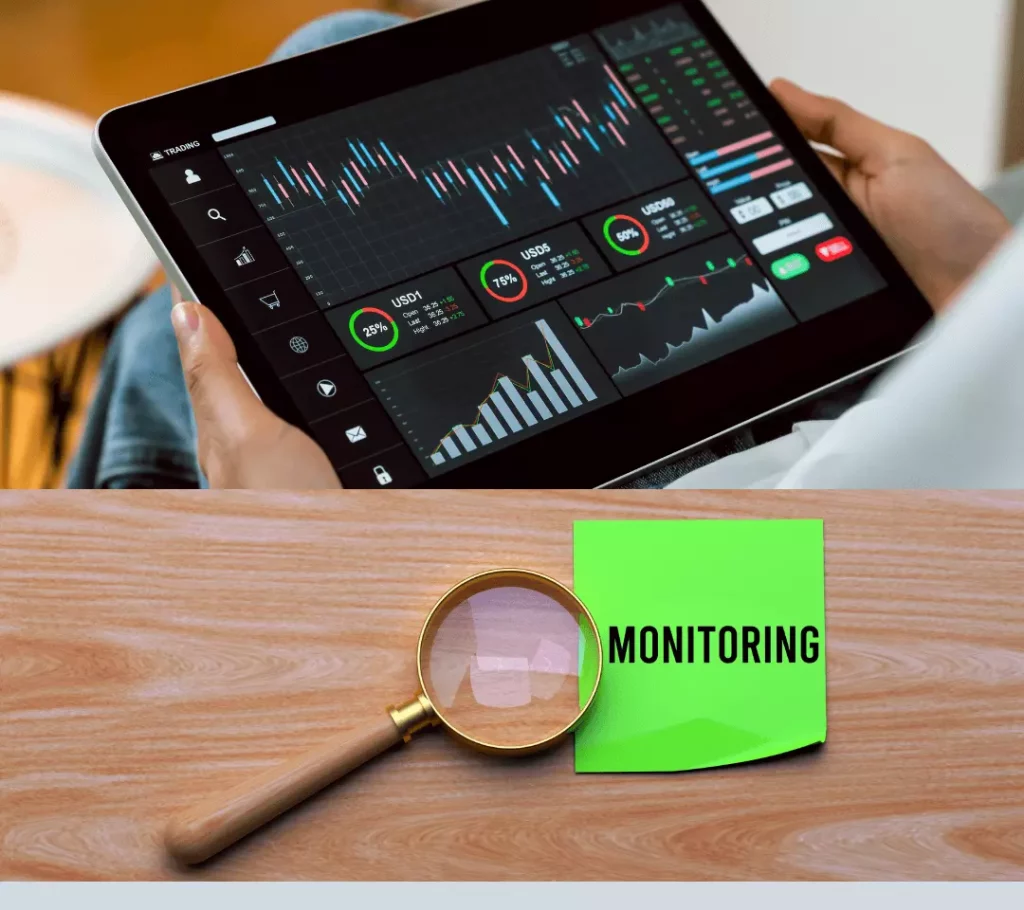Transaction monitoring is becoming increasingly important for firms to develop mechanisms to determine uncertain customer financial transaction patterns. It helps to understand the nature of the financial dealings of customers, such as deposits and withdrawals. However, through real-time transaction monitoring solutions, companies can discover fraud and other criminal acts like money laundering.

Many businesses have enhanced security by adopting strict know-your-transaction limitations. Also, it enables companies to eliminate cyberattacks that could affect the growth of their businesses. Thus, firms can boost their productivity by enforcing AML rules so that fraudsters can’t misuse essential credentials.
Let’s quickly discuss how organizations will improve their operations using transaction monitoring solutions.
How Does Monitoring of Transactions Help Banks to Identify Unlawful Activities?
Many banks and financial firms use monitoring transaction solutions to detect illegal activities, including money laundering and other financial theft. Moreover, it helps banks to identify with whom their clients are working and allow them to monitor users’ transaction details. Furthermore, it includes complete details of their dealings, such as how much money is used and where they are sending it. Thus, transaction monitoring processes allow banks and other financial companies to identify that their employees are authentic. Moreover, it also helps them to verify that their clients are not involved in any illegal activity like terrorist support activities and other financial crimes.
It becomes essential for banks to monitor transactions with enhanced AML/CFT regulations to identify fraudsters in business. It also helps them stay aware of criminals’ newest techniques and ensures they meet the latest risk-based compliance duties.
The following information is essential for banks to recognize to implement effective monitoring transaction processes:
- The total amount of money that employees spend
- Employees’ transaction rate
- Companies involved in a financial transaction and those who receive their funds
- Locations of sender and receiver countries for money transfers
- The relationship between purchases and employees’ ongoing financial practices
- Presence of high-risk variables, including penalties objectives or illegal user identities
This information helps banks and other financial firms to identify illegal identities and restrict them from manipulating businesses. Thus, it allows them to streamline their business efficiency and increases economic growth while working in a risk-free environment. It can surely save a business from severe loss financially.
Why Do Financial Firms Use Payment Transaction Monitoring?
It becomes essential for large organizations to do proper monitoring the transactions of their employees to restrict illegal activities. However, conducting manual transaction monitoring properly for businesses is challenging due to human error issues. Therefore, banks and other financial firms use transaction monitoring software for secure business dealings while restricting money laundering activities.
Automated monitoring software provides quick and accurate outcomes for payment transactions and ensures risk-free business dealings. In addition to this, it reduces the staff’s burden by conducting automatic and secure transaction monitoring of employees’ financial activities. However, monitoring transaction software may also use machine learning techniques to identify the unusual behavior of employees based on their past activities. Thus, companies monitor suspicious transactions of their employees’ payment dealings and secure their financial data from fraudsters. In this way, organizations can securely increase their economic growth and earn significant profits in their business dealings. It helps companies from financial laws and several other problems that can lead organizations to serious legal problems.
Risk-based Approaches for Payment Transaction Monitoring – A Viable Solution
The FATF suggests that financial institutions adopt risk-based approaches for payment transaction monitoring to ensure compliance with the latest KYC & AML regulations. In practice, risk-based transaction monitoring helps banks to monitor each customer and execute a compliance response according to their vulnerabilities. However, it provides strict rules against fraudsters and prevents them from money laundering activities. Moreover, it helps financial firms accurately analyze their employees’ risk abilities and protect the company’s official data from criminals.
There are some security controls that firms use with risk-based approaches for payment transaction monitoring:
● Customer Due Diligence (CDD)
Customer due diligence is the process of identification or verification of a person, to find out their background to avoid illegal acts like terrorist financing, money laundering, and more. Financial organizations must authenticate their employees’ identities accurately to conduct secure transactions against criminals. However, financial institutions must gather personal information, including their names, residence, and date of birth, as part of the Customer Due Diligence (CDD) procedure. It helps to recognise the identity of the customer whether he is an authentic person or has forged documents.
● Verification of Employees Identities Against Hefty Fines
Financial institutions are responsible for checking their employees against applicable fines and monitoring records to prevent them from engaging in business with blacklisted individuals or organizations. This helps to reduce the frauds and scams in companies in employee onboarding. As many of the employees may use fake documents for id verification purposes as they are banned or blacklisted from different organizations.
● Adverse Media Monitoring
A customer’s connection with unfavorable media reports may also provide insights into the risk level involved with a specific transaction. Banks should watch for bad news in the newspaper, TV, and online to ensure their risk profiles are as precise as possible. If a person is involved in any illegal activity, then this solution will help to identify that person. Keeping an eye on the latest news anywhere must be watched to be well informed regarding the high-risk person. It will surely help financial organizations avoid losing their money in any case possible.
Final Thoughts
Companies can now better protect their financial data by conducting accurate monitoring transactions. It will help organizations to save themselves from any kind of loss. However, many people are using digital payment methods, due to which businesses are at risk of financial scams like money laundering. Therefore, companies must implement the latest anti-money laundering policies to safeguard themselves from fraud. Thus, it allows organizations to make better decisions for business economic growth and enhances working abilities.



